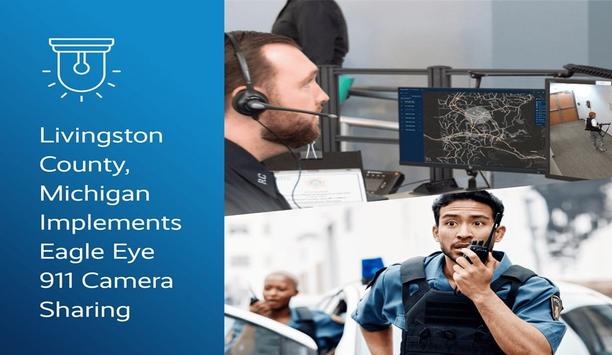 |
| The technological resources from the physical security sector available to prisons dealing with contraband threats are effective |
For those outside the security industry, the idea of prison contraband rarely extends beyond the old gag of a file inside a cake. In fact, contraband at prisons and other custodial premises is a major challenge: deterring and detecting it occupies many man-hours, and manufacturers devote much R&D activity to the problem.
Contrabands in prison
The topic went mainstream recently when a journalist was reporting on the escape by two murderers from Clinton Correctional Facility, a maximum-security jail in New York State. During a live split-screen sequence, the correspondent updates the studio anchor with news about the escape while, in plain light of day, the camera shows a hooded pedestrian behind her attaching a package to a rope that has been thrown over the prison wall.
At time of writing, one of the escapees has been shot dead after being challenged by police and the other has been taken alive. Contraband features prominently in the escape, with prison worker Joyce Mitchell and corrections officer Gene Palmer being accused of providing the escapees with hacksaw blades and other tools hidden in frozen hamburger meat. No, you couldn’t make this up.
Whether simply alleged or ultimately proven, this is crude stuff in our sector where video analytics algorithms are being developed to frustrate infinitely more sophisticated activity such as detecting miniature drones (usually packed with narcotics and mobile phones) being flown over prison walls. The practice has been common in the UK and Ireland for several years but is new to the US where in April there was widespread coverage of a crashed drone being picked up by CCTV cameras after dark at the Lee Correctional Institution, a maximum-security facility in South Carolina.
Morning revealed a package containing a mobile phone, tobacco and marijuana hanging forlornly from power lines on the prison perimeter while a high-tech drone lay in nearby bushes. A search of adjacent forest suggested that the drone’s operator had fled when the crash occurred. It was apparent that repeated flights had been made with modest consignments of contraband on each occasion until the navigational hiccup.
Using drones
The success with which drones are being used to bring mobile phones into prisons is particularly worrisome for authorities since contact with the outside world allows inmates to continue orchestrating crime. The practice will soon have had its day since the response of the drone community has been impeccable: prominent manufacturer DJI has introduced “geofencing” software that prevents the drones from flying over specific locations and, along with other producers, is co-operating with No Fly Zone, a website and planning tool that is creating a database of locations that are considered inappropriate for drone activity.
The success with which drones are being used to bring mobile phones into prisons is particularly worrisome for authorities |
The criminals with their drone in South Carolina were at least showing restraint using a “little but often” approach. Greed proved the undoing of prisoners and their accomplices at Bucaramanga, northern Colombia, where a carrier pigeon was trained to fly over the prison perimeter and land in the yard with a backpack of marijuana and cocaine paste. When the strength of the bird was overtaxed by a 1.6-ounce consignment, it became exhausted. Gamely trying to complete the mission, it was captured and cared for by an animal charity.
Supply methods
The practice of throwing a tennis ball stuffed with heroin or cocaine over a perimeter fence is passé, and the Colombian pigeon is lucky not to have met the fate of pigeons at a jail in Auckland, New Zealand, whose narcotic-filled carcasses were being thrown into the yard until staff became suspicious. (The ruse at Auckland was particularly subtle since inmates were being tasked with clearing up the mess.) Many cats – for some reason always black with white paws – have been caught at prison perimeters with drugs and SIM cards; recent incidents being in Moldova and Tatarstan, western Russia, where a cat carrying a parcel of heroin on its collar was killed by a prison guard dog. The heroin would have been a light consignment compared with an incident at a medium-security jail in Brazil, where a cat was found with the incredible baggage of two saws, two concrete drill bits, a headset, a memory card, three batteries and a mobile phone charger. Showing admirable restraint, the prison governor relieved the cat of its load and drove it to an animal welfare centre himself.
Perimeter protection manufacturers are also doing a good job in persuading prisons that they are not a one-way street focused solely on keeping offenders inside |
However hard one tries to report on the custodial contraband problem in a sober manner, bizarre incidents create a tone of levity. Researching this article, the choicest anecdote I found came from John Moriarity, the Inspector General of the Texas prison system, reporting how a warden in one of the state’s jails received a complaint from the mother of an inmate. She was calling to say that she was paying her son’s mobile phone bill, had checked with the cellular provider to ensure the prison was in a good coverage area and how could he justify her boy getting such a poor quality signal? Staying with Texas, in 2009 George Vera, who at the time tipped the scales at 500 lbs. defeated multiple body frisks when sneaking an unloaded 9mm pistol into Harris County Jail by burying it in his fat folds. You might like to note a final touch of opera in that the twin charges against him were possession of the firearm in a prison and an original allegation of selling bootleg CDs out of the back of an SUV. He finally fessed up to having the weapon during a shower break.
Perimeter protection
On a more serious note, the technological resources from the physical security sector available to prisons dealing with contraband threats are effective and varied. Many of the incidents described above that involve breaches of perimeters can be pre-empted or detected by microphonic cable fence disturbance sensors and buried volumetric sensors. Perimeter protection manufacturers are also doing a good job in persuading prisons that they are not a one-way street focused solely on keeping offenders inside and should also use systems that will stop contraband collaborators (both human and animal) from entering.
Of course the debate over the effects of repeated exposure to ionising radiation during X-raying for contraband at prisons will continue. However, more and more organisations, including civil liberties bodies, are conceding that the doses are comparable with ambient exposure from the atmosphere during everyday life.
The very essence of the burgeoning sector that is video analytics is to detect aberrant behaviour in whatever form, be it unusual movement, speed, positioning, clustering or direction. With more and more of this intelligence residing within cameras “at the edge,” there is an arsenal of technology to assist authorities in keeping contraband out of prisons.








































